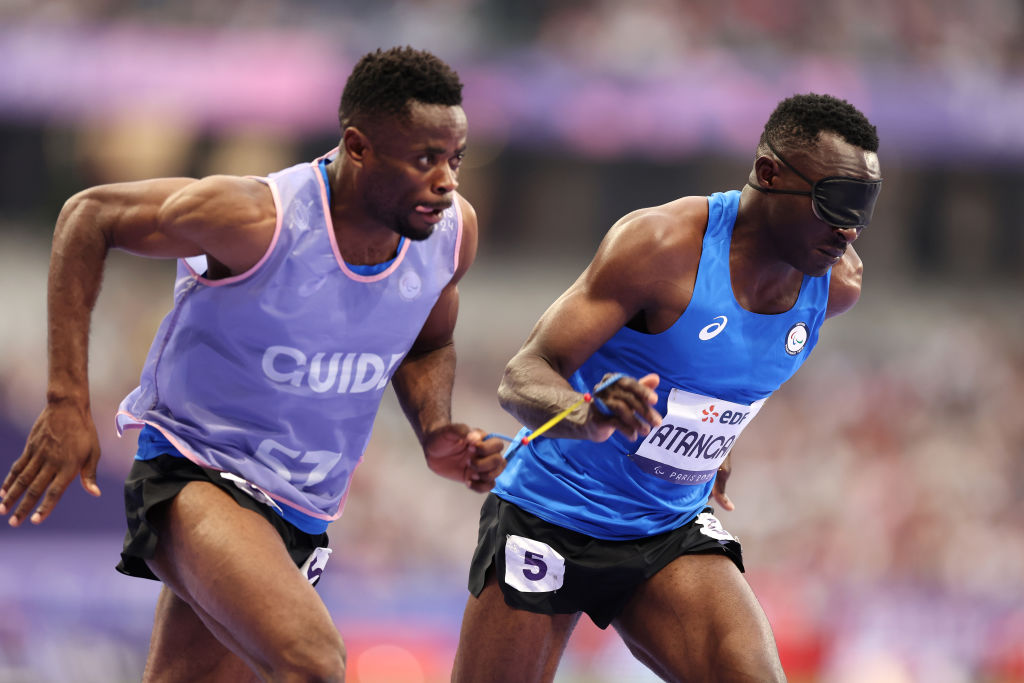
DO GUIDES AT THE PARALYMPICS GET A MEDAL AND WHY DO RUNNERS WEAR BLINDFOLDS?
The finest para-athletes in the world are gunning for gold at the Paris 2024 Paralympics.
But they aren’t the only ones who are hitting the track at the Stade de France, with some events seeing runners competing with guides.
So, why exactly do some athletes, who even compete in a blindfold, run alongside guides and do their chaperones get a medal if they finish on the podium?
Here is everything you need to know as the Games continue in the French capital.
Do guides get a medal at the Paralympics?
Running guides will receive a medal alongside their athlete if they finish on the podium at the Paralympics.
Before the London 2012 games, only the athlete themselves would be awarded with a medal.
Why do athletes run with guides at the Paralympics?
Visually impaired athletes compete with a guide to ensure they can navigate their way around the track safely, with the two tethered together with their wrists or hands.
Running whilst attached to someone else is, unsurprisingly, very difficult, and as such the guide and athlete will train alongside each other on a daily basis.
There are numerous rules enforced, including that the guide must not be deemed to be pulling the athlete along, and the athlete must cross the finish line first.
The guides are often athletes themselves who have trained, or even competed in, major athletic events.
Guides keep their athletes up-to-date as to their position on the track, as well as their time, via constant communication during the race.
Why do some Paralympic runners wear blindfolds?
Related Video
Some athletes in certain track events at the Paralympics wear blindfolds to ensure fairness across events.
This is because visual impairment varies from athlete-to-athlete, and even partial visual ability could be a huge advantage to competitors.
2024-08-29T16:59:31Z dg43tfdfdgfd